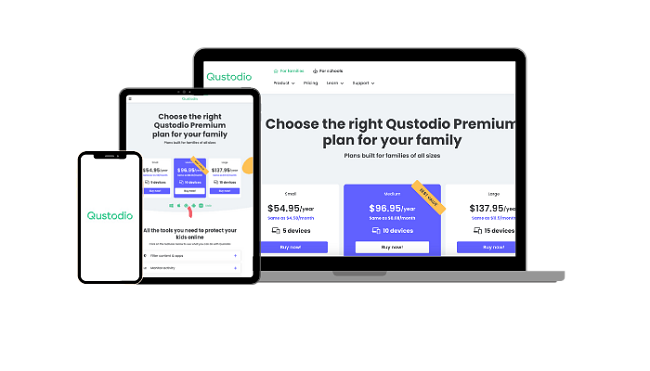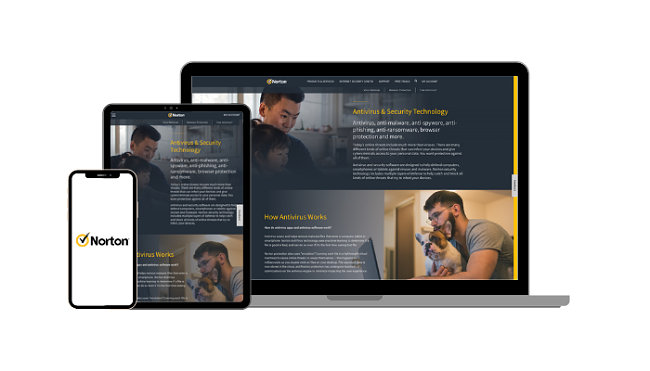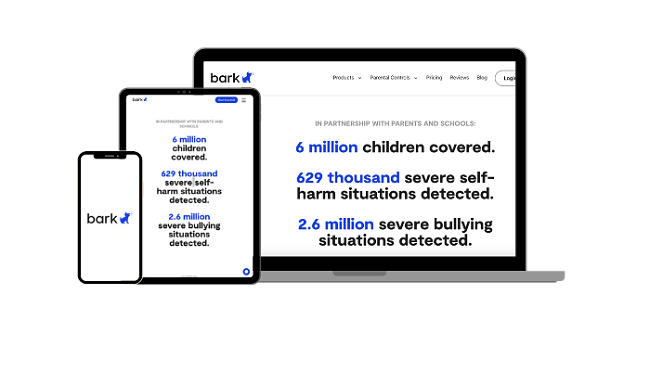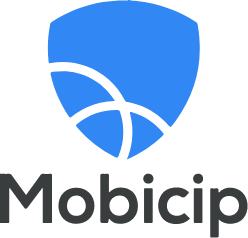How to Set Screen Time Limits on iPad That Really Work in 2024
iPad has an integrated tool for setting screen time limits, called Screen Time; however, after using it for a few weeks, I saw that it’s not very good. The biggest problem is the lack of customization options. Instead of giving me the option to set a daily screen time limit and a schedule, all I could do was schedule one “Downtime” per day, which blocks the iPad. Additionally, there is no option to set screen time limits for individual apps.
I started researching other solutions and tested over 30 free and paid parental control apps to see if I could find some that not only work but that my daughter couldn’t easily bypass.
The majority of apps I tested were not good, since Apple prevents compatibility with many third-party parental control apps. However, I did find 3 that worked, and out of them all, Qustodio was the best. It gives me complete control of when and for how long my daughter can use the iPad and specific apps. Best of all, there’s a 30-day free trial with no credit card required, so you can try it out for yourself risk-free.
Try Qustodio Free for 30 Days!
Quick Guide: 3 Steps to Set Screen Time Limits on iPad in 2024
- Get a parental control app: The only option that really works and can’t be bypassed is a premium parental control app. With Qustodio, I was able to set daily limits, created a screen time schedule, placed screen time rules on specific apps, and paused the iPad remotely from the parental dashboard. You Can try Qustodio free for 30 days.
- Install the app on your child’s iPad: The installation process is through the App store, and I didn’t have to jailbreak the iPad to access all the premium features.
- Limit your child’s screen time on iPad: Log in to the parental dashboard and click on the Rules tab. Here you can set daily time limits, open the Restricted Times section to create a daily schedule, and open the Game & Apps to set screen time rules for select apps.
Try Qustodio Free for 30 Days!
Why Apple Screen Time is Not Good Enough for Setting Limits on iPad
The only reason anyone would use Apple Screen Time is because it’s built into the iPad. However, as I found out, it just leads to frustration because of its many limitations. Here are the key issues with Apple Screen Time:
- Lack of daily screen time limit: I was shocked that Screen Time doesn’t give an option for setting a daily screen time limit. Even if you activate Downtime for an hour after school, the phone remains accessible for the rest of the day.
- Downtime settings are not customizable: While you can use Downtime to block specific apps for a particular time period, I was only able to activate one Downtime per day. This is inconvenient compared to third-party apps that allow you to schedule screen time restrictions throughout the day.
- Limited customization for app-specific limits: Setting screen time limits for individual apps is challenging with Screen Time. You can either choose categories of apps or select multiple apps to limit, but you cannot assign different time limits to each app. This lack of flexibility becomes frustrating when you want to set shorter limits for certain apps like TikTok compared to others like Netflix.
- Managing multiple kids’ devices is difficult: If you have multiple kids with iPads, Screen Time doesn’t offer a centralized dashboard to set rules and view reports from one place. Although Apple’s Family Sharing allows remote management of each iPad, you still need to access each account separately.
- Lack of cross-platform compatibility: Screen Time is exclusive to iOS devices, meaning it cannot be used to set limits on Android tablets or laptops. If you want to manage screen time on different platforms, you’ll need to rely on a separate parental control app.
To overcome these limitations, you need a premium parental control app that is compatible with an iPad. It will offer more customization and flexibility for setting the screen time limits you want to enforce.
2024 Update: Kids Can Now Easily Bypass Apple Screen Time!
Even if you don’t mind that Screen Time has very basic features, you should be aware how easy it is for kids to bypass its rules. These aren’t hacks that only tech-savvy kids can do, but simple hacks that don’t require any technical knowledge.
Here are some of the most common hacks that will allow them to skip the Downtime and use the iPad as long as they want.
Manipulating the Time or Time Zone
Given that Downtime lacks an overarching daily screen time limit, all your child needs to do is alter the device’s time settings to ensure that the Downtime rules won’t hinder their device usage. It’s as easy as disabling the automatic update of date and time and selecting an earlier or later zone. By doing so, they can conveniently sidestep any restrictions.
Uninstalling and Reinstalling Apps
If you’ve set a screen time limit for a particular app, such as a one-hour restriction for Netflix, your child can simply uninstall and reinstall the app. This will erase the screen time rules. Screen time doesn’t send any alerts or notifications about the deletion and reinstallation, so you won’t have a reason to suspect that the screen time limits have been bypassed.
Leveraging Siri for Message Sending
If you’re attempting to limit the amount of time your child spends on messaging friends, they can exploit Siri’s capabilities to send messages via iMessage. Surprisingly, this method remains effective even during Downtime. Furthermore, Siri can also open apps and perform tasks that you’re trying to block your child from accessing.
Unlike Screen Time, which is just a complimentary add-on that is bundled with the iPad, the premium parental control apps are designed by companies that spend all their resources on creating powerful screen time limits that kids can’t easily bypass. Out of the 30+ apps that I tested, Qustodio proved to be the best. You don’t have to take my word for it; you can try Qustodio free for 30 days, with no credit card required, and see how effective it is at setting screen time limits on your child’s iPad.
Try Qustodio Free for 30 Days!
The 3 Best Apps for Putting Screen Time Limits on iPad in 2024
1. Qustodio: Powerful Collection of Screen Time Features for iPad that Can’t be Easily Bypassed
- Set daily screen time limits and usage schedule
- Customize screen time limits for specific apps
- Lock the iPad at any time through the parental dashboard
- Detailed reports track how much time and when your child is on the iPad
- Try it free for 30 days – no credit card is required!
After thoroughly testing over 30 apps for managing screen time on my child’s iPad, I can confidently say that Qustodio has proven to be the best choice. Its range of powerful features and user-friendly controls provided me with the necessary tools to establish healthy digital habits for my child.
The first thing I did was to set a daily screen time limit. It’s a very easy system to use. I can set different screen time limits for each day of the week or enable the option to Allow all Day or Block all Day for each day. These rules are always enforced on that specific day of the week, so I didn’t have to remember to go in every week and adjust or reset the rules.
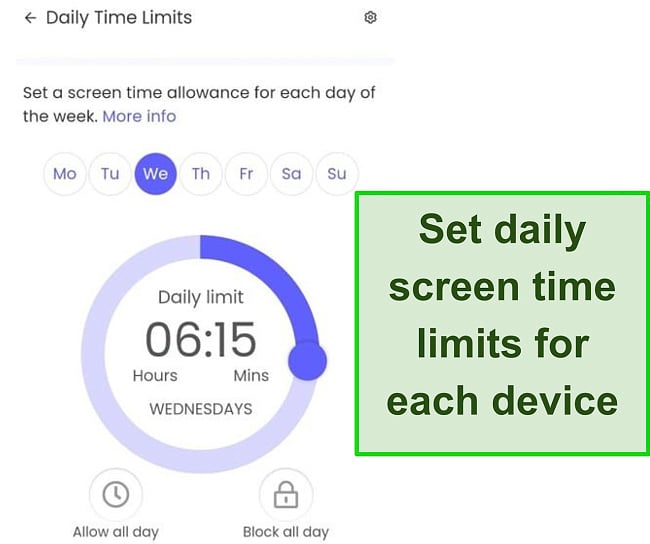
Next, I opened the Restricted Time rules, where I let Qustodio know what times every day of the week to block the iPad. I used this for times when my daughter should be doing homework or in bed. When the iPad is blocked, she sees a lock screen that lets her know what time she can start using the iPad again.
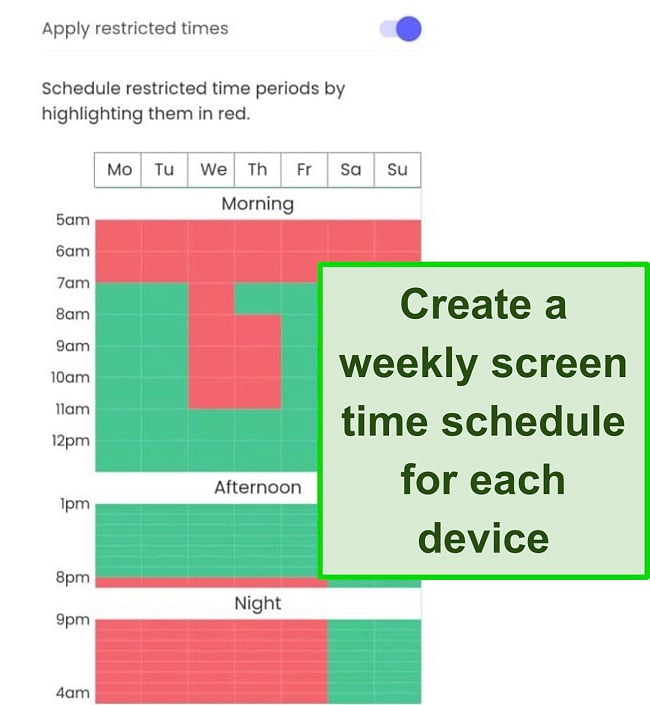
With both of these features, Qustodio gives me the option to either block the internet or hide any app with a 4+ rating or higher, leaving access to basic apps such as the calculator, camera, photos, and other general apps.
Another powerful tool that I haven’t seen with other screen time apps is the ability to apply unique screen time limits for individual apps. Instead of making general rules for all apps, I was able to customize the time limits to match my child’s needs and priorities. This flexibility empowers you to ensure that their time is spent wisely and responsibly on the apps that matter most.
The final tool is the option to pause the internet, which I can enable from the parental dashboard. It remotely locks the iPad at any time, which I find helpful when I need my daughter offline, even though she still has screen time remaining and the calendar indicates the iPad shouldn’t be blocked. Instead of making changes to the rules, I just press the Quick Action button and select Pause the Internet, and it remains locked until I unblock it.
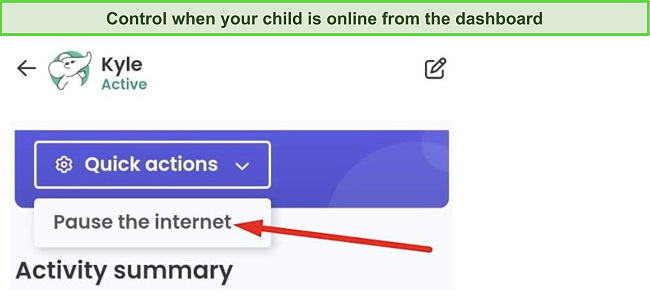
Qustodio automatically generates reports on how much screen time was used. The reports can include daily, weekly, 14 days, or 30 days of data. These comprehensive reports provide valuable insights into their device usage patterns, allowing you to make informed decisions and guide them toward responsible digital behavior.
You can try Qustodio free for 30 days, and the best part is, no credit card is required. Take advantage of this opportunity to get a firsthand look at the ease and reliability of Qustodio in setting screen time limits on your child’s iPad.
Try Qustodio Free for 30 Days!
2. Norton Family: Set Daily and Weekly Screen Time Limits to Prevent Your Child From Spending Too Much Time on the iPad
- Use default or custom screen time limits
- Instant Lock allows you to control screen time from anywhere
- 30-day free trial!
I installed the app and went to the dashboard to set up the screen time limits. Norton Family has both a general screen time limit and the option to set up a daily screen time schedule. However, it only works in 30-minute time blocks, which isn’t as flexible as Qustodio. When screen time is over, Norton Family covers the iPad with a lock screen that includes a link for the child to request additional time.
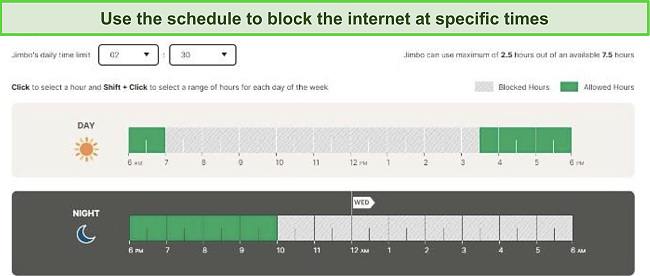
School Time is another helpful screen time tool from Norton Family. I activate it during school hours and homework time. It blocks non-educational websites and apps, to avoid distractions. One nice aspect of this feature is that it doesn’t count against the general screen time limits. This way, my daughter won’t feel like she’s using up screen time for schoolwork.
The Instant Lock option is accessible from the parental dashboard. It instantly locks the iPad, regardless of the other screen time settings, and can only be deactivated with a 4-digit PIN or through the parental dashboard. This gives me the convenience and control to restrict my daughter’s internet usage, even if I’m not physically near her device.
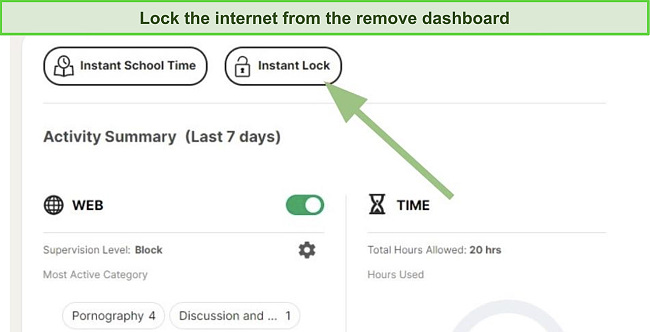
With Norton Family, you can take advantage of the 30-day free trial, giving you the opportunity to test its screen time features risk-free. Keep in mind that you’ll need to add a credit card to activate the account. During the trial, you’ll have access to all the premium features, allowing you to make an informed decision before committing to an annual subscription plan.
Try Norton Family Free for 30 Days!
3. Bark: Customize a Screen Time Routine Based on Your Child’s Schedule and Interests
- Choose when apps and web categories are available
- Pause the internet remotely
- Try it free for 7 days!
Instead of setting a general screen time limit, Bark has a fully customizable screen time routine. There are three sets of rules that can be activated throughout the day and evening, bedtime, free time, and school time. There’s also a default option that is used when none of the other rules are activated.
When you customize the rules, you can choose what apps, websites, or categories can be accessed when that segment is active. In other words, during bedtime, I block everything except Spotify, since my daughter likes to listen to music when she goes to sleep. I use the default settings to block everything so that she has to put down the iPad and do something else.
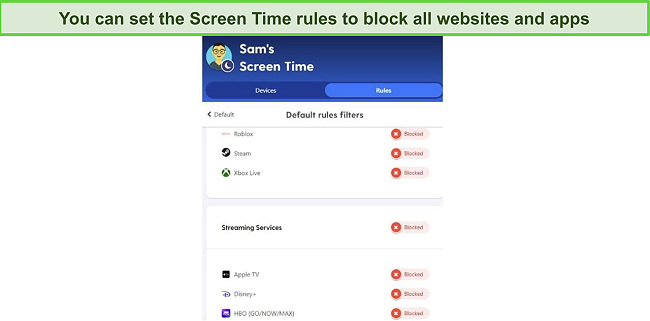
I also have the option to pause the internet. Before pausing the internet, Bark gave me the option of setting a specific duration for the internet to remain paused or manually restore access by returning to the dashboard. It is worth noting that the internet pause applies to all devices connected to my Bark account, rather than being device-specific.
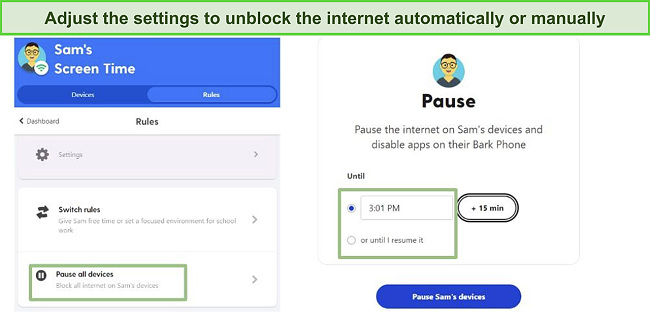
In addition to iPad, Bark works on iPhones, Macs, PC, and Android, with no limit on how many devices you can set screen time limits at a time. You can take advantage of a free 7-day trial, and test Bark out for yourself.
FAQ
How do I set up screen time limits on my iPad?
Is it possible to schedule specific periods of time when my child’s iPad is off-limits?
How can I track my child’s screen time usage on the iPad?
Only A Premium Parental Control App Can Set Time Limits On iPad
While the built-in Apple Screen Time feature on the iPad has some basic functionality, it’s not a reliable option for setting screen time limits on the iPad. Its limitations include the inability to set a daily screen time limit, inflexible options for app-specific time limits, and difficulties in managing multiple children’s devices. These shortcomings were too much to overcome, and so I had to find a better solution.
After testing over 30 screen time limit apps, I found only a few that worked well on an iPad. Among them, Qustodio emerged as the best choice for setting time limits on an iPad. It has a wide range of features, including the ability to create customized screen time schedules, set unique time limits for individual apps, and manage multiple devices from a centralized dashboard. Its user-friendly interface and robust functionality make it a reliable choice for parents seeking to maintain a healthy balance of screen time for their children. As an added bonus, Qustodio offers a generous 30-day free trial, allowing parents to experience its effectiveness firsthand before committing to a subscription.

